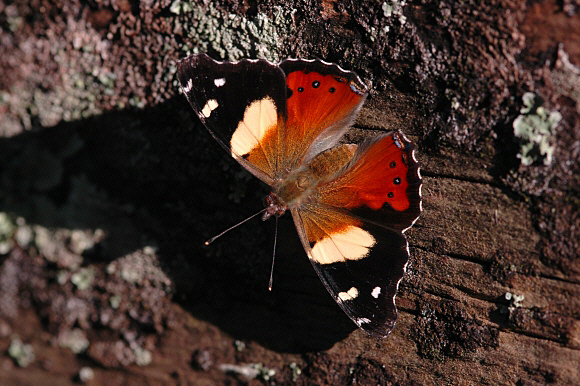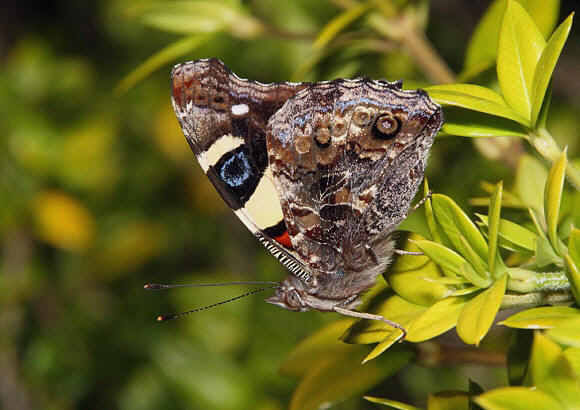
Introduction
The genus Vanessa comprises of about 20 species worldwide. The genus is divided into 2 groups – the Painted Ladies and the Red Admirals.
The Red Admiral group includes atalanta which occurs in Europe, Asia, north Africa and throughout North America; indica which is found in temperate regions of Asia; gonerilla from New Zealand, and the Yellow Admiral itea ( incorrectly placed in another genus Bassaris by some workers ) which is found in Australia and New Zealand, and also on Loyalty Island and Norfolk Island.
Habitats
This species can be found in almost any habitat where the larval foodplants grow, and there are nectar sources available for the adults.
Lifecycle
The eggs are green with 9 prominent vertical keels. They are laid in two’s or three’s at the top of foodplants, close to the stem near the stem. The usual foodplant is stinging nettle Urtica dioica but other Urtica species are also used. The larva lives solitarily within a shelter made by folding over a nettle leaf and fastening it with a few strands of silk. The fully grown larva is black with branched dorsal and lateral spikes on each segment. There is a pale yellow zig-zag stripe below the spiracles, interrupted on each segment by a reddish spike. There are also thinner pale yellow dorsal and subdorsal stripes. The chrysalis is straw coloured or pale brown and often has a golden sheen. It is suspended by the cremaster from a stem of nettle or a nearby twig or plant stalk.

Adult behaviour
Males commonly bask on the ground, waiting to fly up and intercept passing females. Both sexes visit a wide variety of nectar sources, and visit sap runs on trees.
